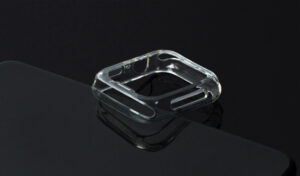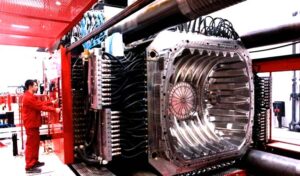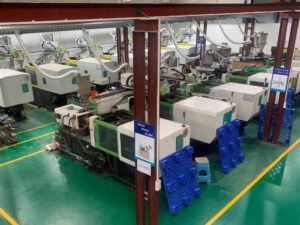Classification of injection moulds
(1) Single parting surface injection moulds
When the mould is opened, the moving mould and the fixed mould are separated so that the plastic part can be removed, called a single parting mould, also known as a double-plate mould. It is the simplest and most basic form of injection mould, and can be designed as a single-cavity mould or a multi-cavity mould, depending on the needs
(2) Double split face injection moulds
Compared to single parting injection moulds, double parting injection moulds have an intermediate plate (also called movable sprue plate, which is equipped with gates, runners and other parts and components required for the mould) that can be moved locally in the fixed part of the mould. When the mould is opened, the intermediate plate is separated from the fixed template by a fixed distance on the guide pillar of the mould, so that the condensed material can be removed from the pouring system between the two templates. The double parting mould is complex, expensive to manufacture and difficult to process, and is not generally used for the moulding of large or very large plastic products.
(3) Injection moulds with lateral parting and core extraction mechanism
When the moulded part has side holes or side concaves, a laterally movable core or slider is used. After injection moulding, the moving mould first moves downwards for a distance and then the bevelled section of the bent pin fixed to the fixed mould plate forces the slider to move outwards, while at the same time the push rod of the demoulding mechanism pushes the push plate to release the moulded part from the core.
(4) Injection moulds with moving moulded parts
Due to the special structure of the plastic parts, the injection mould is required to set up movable moulding parts, such as movable convex moulds, movable concave moulds, movable inserts, movable threaded cores or rings, etc., which can be moved out of the mould together with the plastic parts during demoulding, and then separated from the plastic parts.
(5) Automatic thread release injection mould
In the case of threaded parts, when automatic release is required, a threaded core or ring can be set up on the mould which can be rotated to release the part by using the opening action of the mould or the rotating mechanism of the injection moulding machine, or by setting up a special transmission device to rotate the threaded core or ring.
(6) Runnerless injection moulds
A runnerless injection mould is one that uses adiabatic heating of the runners to keep the plastic between the nozzle and the cavity of the injection moulding machine in a molten state, so that when the mould is opened and the part removed there is no condensation in the pouring system. The former is called an adiabatic runner injection mould and the latter a hot runner injection mould.
(7) Right-angle injection moulds
The right-angle injection moulds are only suitable for angular injection moulding machines and are very different from other injection moulds in that the direction of feed is perpendicular to the opening and closing of the mould. The main flow channel is open on both sides of the parting surface of the moving and fixed moulds, and its cross-sectional area is usually constant, which is different from that of other moulds.
(8) Injection mould with release mechanism on the fixed mould
In most injection moulds, the release mechanism is installed on the dynamic side of the mould, which facilitates the work of the ejector in the opening and closing system of the injection moulding machine. In practice, due to the shape of some parts, it is better to leave the part on the fixed side of the mould to enable it to be released from the mould.




